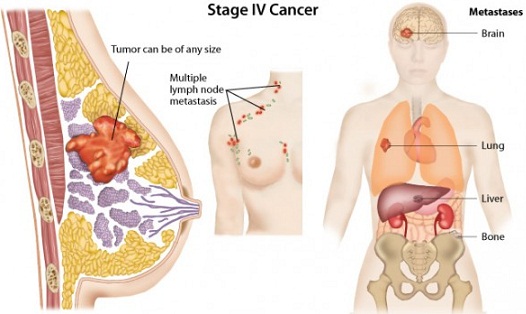Many people think breast cancer begins with a lump in the breast, however, not every type of this cancer does. A form of breast cancer which affects the skin of the breast is inflammatory breast cancer. It only accounts for about one to five percent of all cases of breast cancer, making it rare, as reported by the National Cancer Institute. It is, however, difficult to diagnose, and it can spread quickly and aggressively.

What Is Inflammatory Breast Cancer?
This type of cancer is rare and develops quickly, making the breast which is affected swollen, tender and red. Inflammatory breast cancer happens when the lymphatic vessels in breast skin are blocked by cancer cells, which causes the characteristic symptoms of a swollen and red breast.This cancer is thought to be one that is locally advanced, which means it spreads from its starting point to tissue which is nearby, and maybe even to lymph nodes that are close. It can be confused easily with a breast infection. Promptly seek medical attention if you see any changes to your breast skin to help distinguish an infection of the breast from other disorders like inflammatory breast cancer.Inflammatory Breast Cancer Pictures in Different Stages
Inflammatory breast cancer includes many stages which can be tested. After your staging tests are completed, your doctor will tell you which stage of inflammatory breast cancer you are with, which include stage IIIB, stage IIIC and stage IV. Usually, inflammatory breast cancer is thought of as stage IIIB breast cancer at the least when it is diagnosed.The photographs that follow will show the usual visual clinical symptoms which appear when the cancer is diagnosed and before treatment.| Stages | Description |
|
Stage IIIB  |
In this stage, the cancer has spread to the tissues nearby the breast, like the chest wall or skin, which includes the muscles in the chest and the ribs. It could have spread under the arm or in the breast lymph nodes but not to other parts of the body. It also may have caused ulceration or swelling of the breast. |
|
Stage IIIC  |
The cancer has gone to the lymph nodes near your neck and under your collarbone in this stage. It may have also spread to lymph nodes in your breast or under the arm, plus to tissues close to the breast. The tumor can be of any size at this point, but it has not spread to distant parts of your body. |
|
Stage IV  |
In this stage, the cancer has reached your other organs, which can include the lungs, bones, liver and/or brain, plus the lymph nodes that are distant to the origin point. The tumor can be of any size. Metastatic cancer is found about5-6 % of the timewhen breast cancer is diagnosed.Metastatic breast cancer is more typically found after a diagnosis previously of a breast cancer in an early stage. |
Inflammatory Breast Cancer Pictures with Different Symptoms
There are several different symptoms associated with inflammatory breast cancer that you should be aware of. The pictures below will help you to determine if there is a problem which you need to address with you doctor.1. Skin Changes

In breast cancer, cancer cells generally form a lump. It can sometimes be felt during a self-exam, or can be detected by a mammogram. However, with inflammatory breast cancer, cells crowd into the lymph vessels instead of clumping together in the breast. These vessels are small channels which hold liquid that assists the body in fighting infections and filtering out damaging substances. When lymph nodes are blocked by cancer cells, they cause a color or texture change of the breast skin.

2. Redness

The first sign that women usually notice with inflammatory breast cancer is redness of the breast. Sometimes the color turns a purple or pink shade and can even look like a large bruise. The color may cover one-third of the breast or even more, and breast can feel warmor sore to the touch.

3. Orange Skin

With color change, the breast might take on a different texture. Many times it looks ridged or pitted, like an orange peel. This can be called peau d’orange sometimes, which is French for orange skin. The appearance of dimples happens when the cancer cells block the lymph vessels under your skin, making tiny ridges and bumps.

4. Enlarged Breast

This type of cancer is a fast-growing disease and women who have it will see fast changes, usually in one of their breasts. The appearance and size of the breast can change in just weeks. One sign of this disease is one breast which grows quickly, becoming larger than the other one. The larger breast could also feel heavier and firmer than normal.

5. Inverted Nipple

There are some women who have inverted nipples, which means the nipples can turn inward. Usually there’s nothing to worry about. However, if there is only one nipple that is inverted or stay that way, this could be a sign of inflammatory breast cancer. With a breast exam, biopsy or mammogram, your doctor can check out this symptom to rule out the possibility of breast cancer.

6. Swollen Lymph Nodes

Lymph nodes are round, small structures which are part of the immune system of the body. They are full of white blood cells and other cells which fight infection. Usually when they get swollen, it is from an infection. However, cancer can also cause these nodes to swell. Swollen lymph nodes can generally be found near the collarbone or under the arm in women who have inflammatory breast cancer.